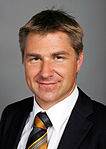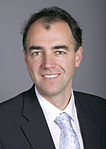Swiss federal election, 2015

|
|||||||||||||||||||||||||||||||||||||||||||||||||||||||||||||||||||||||||||||||||||||||||||||||||||||||||||||||||||||||||||||||||||||||||||||||||||||||||
|---|---|---|---|---|---|---|---|---|---|---|---|---|---|---|---|---|---|---|---|---|---|---|---|---|---|---|---|---|---|---|---|---|---|---|---|---|---|---|---|---|---|---|---|---|---|---|---|---|---|---|---|---|---|---|---|---|---|---|---|---|---|---|---|---|---|---|---|---|---|---|---|---|---|---|---|---|---|---|---|---|---|---|---|---|---|---|---|---|---|---|---|---|---|---|---|---|---|---|---|---|---|---|---|---|---|---|---|---|---|---|---|---|---|---|---|---|---|---|---|---|---|---|---|---|---|---|---|---|---|---|---|---|---|---|---|---|---|---|---|---|---|---|---|---|---|---|---|---|---|---|---|---|---|
|
|||||||||||||||||||||||||||||||||||||||||||||||||||||||||||||||||||||||||||||||||||||||||||||||||||||||||||||||||||||||||||||||||||||||||||||||||||||||||
|
All 200 seats in the National Council (101 seats needed for a majority) All 46 seats in the Council of States (24 seats needed for a majority) |
|||||||||||||||||||||||||||||||||||||||||||||||||||||||||||||||||||||||||||||||||||||||||||||||||||||||||||||||||||||||||||||||||||||||||||||||||||||||||
|
|||||||||||||||||||||||||||||||||||||||||||||||||||||||||||||||||||||||||||||||||||||||||||||||||||||||||||||||||||||||||||||||||||||||||||||||||||||||||

Map of Swiss cantons shaded by the party that won the most votes in elections to the National Council
■ – SVP/UDC ■ – CVP/PDC ■ – FDP/PLR |
|||||||||||||||||||||||||||||||||||||||||||||||||||||||||||||||||||||||||||||||||||||||||||||||||||||||||||||||||||||||||||||||||||||||||||||||||||||||||
■ – SVP/UDC ■ – CVP/PDC ■ – FDP/PLR
■ – SPS/PSS ■ – BDP/PBD
Federal elections were held in Switzerland on 18 October 2015 for the National Council and the first round of elections to the Council of States, with runoff elections to the Council of States being held in various cantons until November 22. Results showed a shift, due to voter concerns regarding refugee immigration, to the right and increased support for the three largest parties, with the strong showing of Swiss People's Party and FDP.The Liberals possibly affecting future reforms of energy, social security and tax issues, as well as the make-up of the seven-member government.
The Swiss People's Party won a record number of seats, taking a third of the 200-seat lower house. The SVP received the highest proportion of votes of any Swiss political party since 1919, when proportional representation was first introduced, and it received more seats in the National Council than any other political party since 1963, when the number of seats was set at 200.
The federal election was followed by the 2015 Swiss Federal Council election on December 9, 2015, where the SVP won a second seat on the Federal Council.
The 200 members of the National Council were elected by plurality in five single-member constituencies, and by proportional representation in 21 multi-member constituencies, with the 26 constituencies being the 26 cantons. The elections were held using the open list system where voters could cross out names on party lists, with voters also able to split their vote between parties (a system known as panachage) or draw up their own list on a blank ballot. Seats are allocated using the Hagenbach-Bischoff system.
...
Wikipedia










